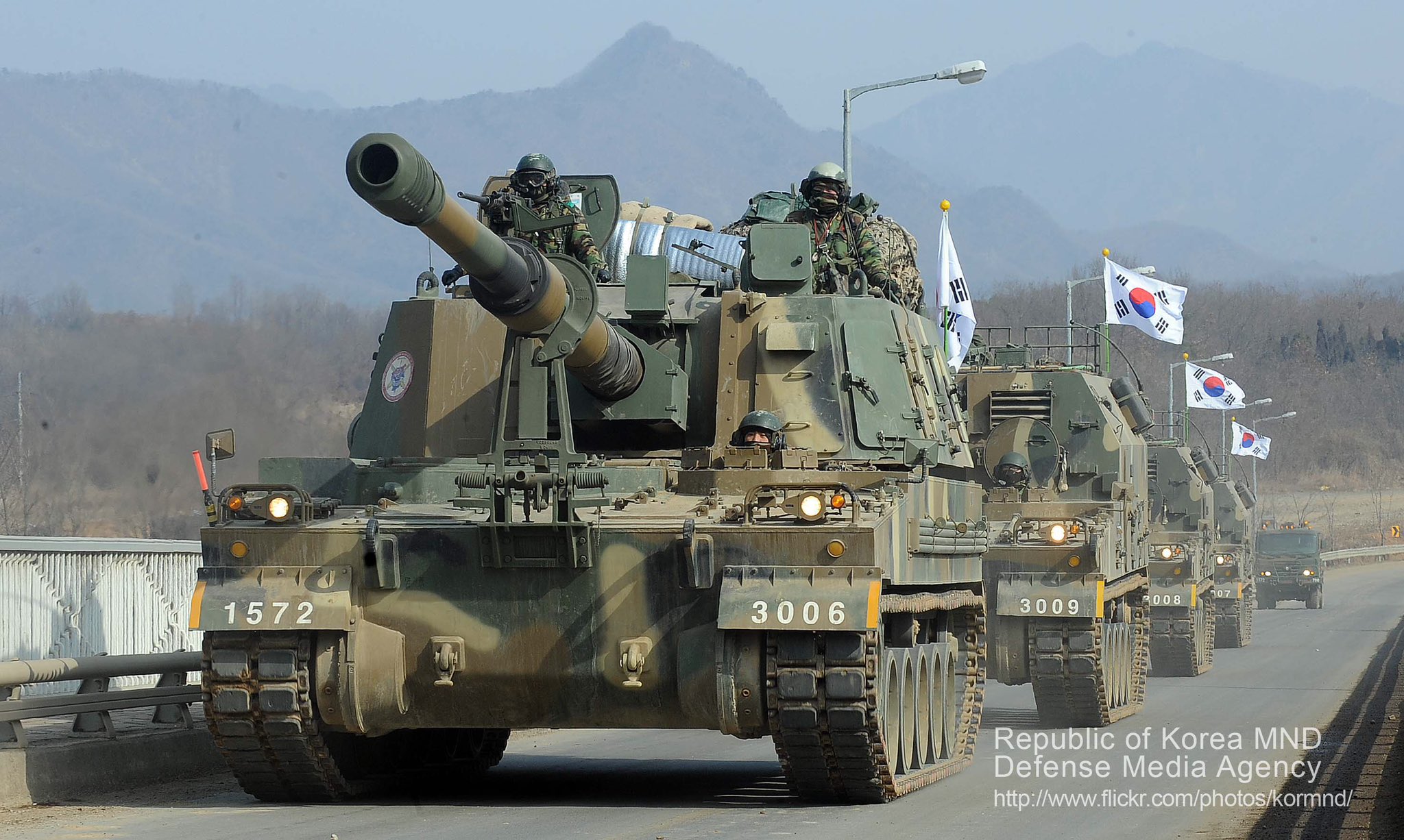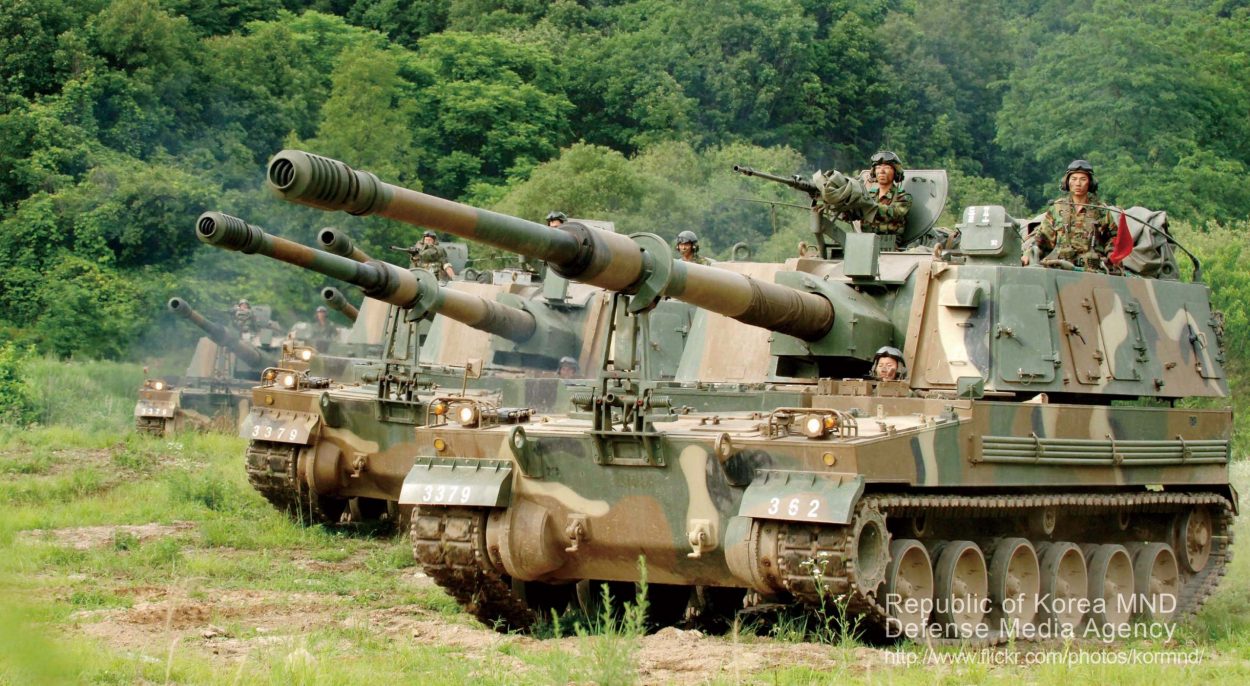South Korea carried out live-fire drills on January 2, featuring its powerful K9 ‘Thunder’ self-propelled howitzers. The drills were conducted amid consistent provocations from North Korea.
The exercise unfolded in areas near the front line, with the participation of key military units, including the Capital Mechanized Infantry Division and the 2nd Quick Response Division.
Alongside the state-of-the-art K9 self-propelled howitzers, the drills also featured K2 tanks, highlighting the nation’s commitment to maintaining a robust defense posture.
Under the scenarios simulated during the drills, troops responded decisively to enemy artillery provocations. Precise retaliatory artillery fire was carried out, specifically aimed at the origin of provocations, enemy command centers, and their supporting forces.
The Army also showcased its aerial prowess by mobilizing Apache attack helicopters to provide crucial air support for ground troops. The officials said that mechanized units engaged in swift maneuvers and demonstrated their capability to suppress enemy forces effectively.

Amid a challenging security landscape, the Army emphasized that the exercise was conducted to uphold a combat posture at all times. The goal was to reinforce the nation’s resolve for a quick response and punishment in case of any enemy provocation.
This demonstration of military strength occurred following North Korean leader Kim Jong-un’s recent characterization of inter-Korean ties as “relations between two states hostile to each other.”
Kim’s call for intensified preparations to “suppress the whole territory of South Korea” in a year-end ruling party meeting added a sense of urgency to South Korea’s commitment to enhancing its military capabilities.
The Success Of South Korea’s K9 Howitzer
South Korea specifically engineered the K9 for optimal performance in the challenging terrain of the demilitarized zone with North Korea. To tackle the rugged landscape, the K9 boasts advanced hydropneumatic suspension, ensuring it can navigate seamlessly over rocky surfaces.
Capable of carrying up to forty-eight shells, the Thunder, as it is colloquially known, relies on K10 ammunition resupply vehicles for replenishment.
The K10 efficiently transfers up to 104 additional rounds through an automated bridge, eliminating the need for the crew to expose themselves to potential enemy fire. Notably, the K10 shares the same hull as the K9, promoting maintenance commonality between the two.
The Thunder’s exceptional mobility, rapid deployment capabilities, and Multiple Rounds Simultaneous Impact (MRSI) capability position it as an ideal weapon for delivering brief yet potent artillery barrages.
Its ability to swiftly redeploy to new firing positions minimizes the risk of retaliatory counterbattery fire, underscoring the K9’s strategic advantage on the battlefield.
South Korea’s K9s encountered their first combat engagement on November 23, 2010, at Yeonpyeong Island, positioned at the extreme western tip of the North-South border.
Following a perceived provocation from a South Korean naval exercise earlier that day, North Korean artillery launched an indiscriminate hour-long bombardment on Yeonpyeong Island, causing two civilians and two Korean marine casualties, along with twenty-two others wounded.
Responding to the attack, the battery of six K9 Thunder howitzers on the island retaliated. Unfortunately, two of them suffered damage to their fire-control systems, rendering them inoperable, while another temporarily jammed but was eventually brought back into action.
The operational K9s discharged eighty shells and targeted the barracks of the North Korean Army on Mudo Island. Compounded by earlier ammunition depletion in an exercise, Korean Marines resorted to manual reloading of the howitzers.
South Korean intelligence approximated that the counterbattery fire resulted in thirty-five to forty North Korean casualties, a claim contested by North Korea, which denied sustaining any losses.
The weapon system has achieved notable success in the global market, garnering significant orders from various countries. Among the adopters are NATO members such as Finland, Estonia, Poland, and Turkey, indicating the system’s acceptance within the alliance.

Also, nations, including Egypt, India, and Australia, have incorporated this advanced weapon system into their military. Presently, there are over 1,700 operational K9 variants worldwide.
In 2011, Turkey solidified its commitment to the K9 Howitzer by signing a deal with South Korea to acquire 350 units. Additionally, Turkey obtained a license to locally manufacture the T-155 Firtina, a specific variant based on the K9 platform.
Similarly, India has embraced the K9 Howitzer, with Larsen & Toubro of India and Hanwha Techwin (HTW) of South Korea entering into a significant contract in July 2017.
This collaborative agreement entails the production of the K9 155mm/52 Caliber Tracked Self-Propelled Howitzer for the Indian Army, recognized as Vajra-T. This variant stands as an enhanced version derived from the K9 Thunder.
- Contact the author at ashishmichel(at)gmail.com
- Follow EurAsian Times on Google News




